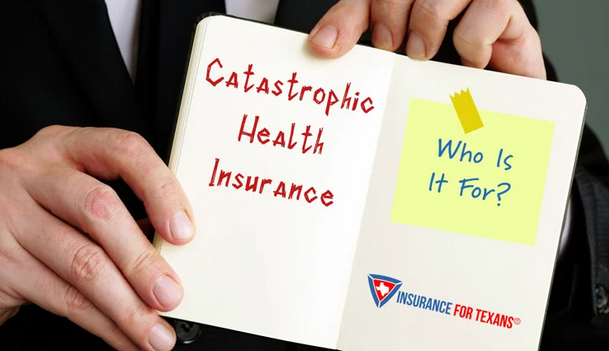Catastrophic health insurance is a type of health insurance that is designed to cover major medical expenses, such as those resulting from a serious illness or accident. It typically has a high deductible, but once the deductible is met, the insurance company will pay for most or all of the covered expenses.
Catastrophic health insurance is often less expensive than traditional health insurance, but it is important to understand the limitations of this type of coverage. For example, catastrophic health insurance may not cover preventive care or routine medical expenses. It is also important to note that catastrophic health insurance does not cover long-term care expenses.
Despite its limitations, catastrophic health insurance can be a good option for people who are healthy and do not have a lot of medical expenses. It can also be a good option for people who are on a tight budget.
Catastrophic Health Insurance
Catastrophic health insurance provides financial protection against unforeseen major medical expenses. Understanding its key aspects is crucial:
- High Deductible: Requires a substantial out-of-pocket payment before coverage begins.
- Limited Benefits: Covers major medical expenses, excluding preventive care and routine checkups.
- Lower Premiums: Typically less expensive than comprehensive health insurance.
- Income Eligibility: Often available to individuals and families with low incomes.
- Tax Credits: May qualify for government subsidies to reduce premium costs.
- Short-Term Coverage: Designed for temporary coverage gaps, such as between jobs.
- Limited Provider Networks: May restrict access to certain healthcare providers.
- No Long-Term Care Coverage: Does not cover expenses related to chronic conditions or long-term care.
These aspects highlight the trade-offs involved with catastrophic health insurance. Its lower premiums and high deductibles make it suitable for healthy individuals with limited medical expenses. However, it may not provide sufficient coverage for those with ongoing health conditions or those seeking comprehensive medical care. Understanding these limitations is essential when considering catastrophic health insurance as a financial safety net.
High Deductible: Requires a substantial out-of-pocket payment before coverage begins.
Catastrophic health insurance is characterized by its high deductible, which significantly impacts its coverage and affordability. The deductible represents the amount an individual must pay for covered medical expenses before the insurance company begins to contribute. By setting a high deductible, catastrophic health insurance plans aim to reduce the overall cost of premiums, making them more accessible to individuals and families with limited budgets.
The connection between the high deductible and catastrophic health insurance is crucial. The high deductible acts as a cost-sharing mechanism, encouraging policyholders to be more mindful of their healthcare expenses. It promotes responsible healthcare utilization by deterring unnecessary medical services or treatments. Additionally, the high deductible allows insurance companies to offer lower premiums compared to traditional health insurance plans with lower deductibles.
For instance, an individual with a catastrophic health insurance plan with a $5,000 deductible would be responsible for paying the first $5,000 of eligible medical expenses before the insurance company starts to cover the remaining costs. This arrangement encourages individuals to prioritize preventive care and maintain healthy habits to minimize out-of-pocket expenses.
Understanding the connection between the high deductible and catastrophic health insurance is essential for informed decision-making. Individuals considering catastrophic health insurance should carefully evaluate their financial situation, health status, and healthcare needs to determine if this type of coverage aligns with their circumstances and goals. It is advisable to consult with insurance professionals or financial advisors to assess specific insurance options and make the most suitable choice.
Limited Benefits: Covers major medical expenses, excluding preventive care and routine checkups.
Catastrophic health insurance focuses on providing coverage for catastrophic medical events, which are often associated with high and unexpected expenses. As a result, this type of insurance plan typically offers limited benefits, excluding preventive care and routine checkups.
- Emergency Care: Catastrophic health insurance primarily covers emergency medical expenses, such as those resulting from accidents, sudden illnesses, or life-threatening conditions. These expenses can include emergency room visits, hospitalizations, and surgeries.
- Inpatient Hospitalizations: The coverage extends to inpatient hospital stays, including room and board, nursing care, and necessary medical procedures performed during the hospitalization.
- Major Surgeries: Catastrophic health insurance plans cover the costs associated with major surgeries, such as cancer treatments, organ transplants, and complex orthopedic procedures.
Understanding the limited benefits of catastrophic health insurance is crucial. Individuals considering this type of coverage should be aware that preventive care, routine checkups, and ongoing medical conditions may not be covered. It is essential to weigh the potential costs of these excluded services against the lower premiums associated with catastrophic health insurance.
Lower Premiums: Typically less expensive than comprehensive health insurance.
Catastrophic health insurance stands out due to its lower premiums compared to comprehensive health insurance plans. This cost advantage is a primary factor driving its appeal, particularly among individuals and families with limited budgets.
The lower premiums of catastrophic health insurance are directly tied to its limited coverage. By excluding preventive care, routine checkups, and certain medical services, catastrophic health insurance providers can offer significantly reduced premiums. This trade-off allows individuals to secure financial protection against catastrophic medical events without incurring the higher costs associated with comprehensive coverage.
For example, a young and healthy individual may opt for catastrophic health insurance with a high deductible and limited benefits to save on monthly premiums. This arrangement provides peace of mind knowing that major medical expenses will be covered if an unexpected health crisis arises, while allowing them to allocate funds towards other financial priorities.
Understanding the connection between lower premiums and catastrophic health insurance is crucial for consumers seeking affordable health coverage. Individuals should carefully consider their health needs, financial situation, and risk tolerance when evaluating catastrophic health insurance. It is advisable to consult with insurance professionals to assess individual circumstances and determine the most suitable insurance plan.
Income Eligibility: Often available to individuals and families with low incomes.
Catastrophic health insurance recognizes the financial challenges faced by individuals and families with low incomes. To ensure accessibility and affordability, many catastrophic health insurance plans are designed with income eligibility criteria. This means that individuals and families below a certain income threshold qualify for these plans, making it easier for them to obtain financial protection against unforeseen major medical expenses.
The connection between income eligibility and catastrophic health insurance lies in its target population and affordability. By focusing on low-income individuals and families, catastrophic health insurance aims to provide a safety net for those who may not have access to comprehensive health insurance due to financial constraints. The income eligibility criteria ensure that these individuals can still secure coverage for catastrophic events, offering peace of mind and financial security.
For example, in the United States, the Affordable Care Act (ACA) expanded Medicaid eligibility to include low-income adults, providing access to catastrophic health insurance plans. This has been instrumental in reducing the number of uninsured individuals and providing financial protection for those who need it most. Income-eligible individuals can enroll in Medicaid managed care plans that offer comprehensive benefits, including catastrophic health insurance coverage.
Understanding the connection between income eligibility and catastrophic health insurance highlights the importance of affordable healthcare options for low-income populations. It emphasizes the role of government and insurance providers in ensuring that individuals and families have access to essential health coverage, regardless of their financial circumstances.
Tax Credits: May qualify for government subsidies to reduce premium costs.
Tax credits play a significant role in making catastrophic health insurance more accessible and affordable for individuals and families. Governments recognize the financial burden of healthcare costs and provide subsidies to reduce the premium costs associated with catastrophic health insurance plans.
- Premium Tax Credit: The premium tax credit is a subsidy that helps lower the monthly premiums for catastrophic health insurance plans. This credit is available to individuals and families who meet certain income requirements and is designed to make catastrophic health insurance more affordable for those who need it most.
- Cost-Sharing Reduction (CSR): CSRs are subsidies that help reduce out-of-pocket costs, such as deductibles, copayments, and coinsurance. These subsidies are available to individuals and families who meet certain income requirements and can significantly reduce the financial burden of catastrophic health insurance plans.
The connection between tax credits and catastrophic health insurance is crucial in ensuring that individuals and families have access to affordable healthcare coverage. By providing subsidies to reduce premium costs, governments are making catastrophic health insurance a more viable option for those who may not otherwise be able to afford it. This helps to reduce the number of uninsured individuals and ensures that everyone has access to essential health coverage.
Short-Term Coverage: Designed for temporary coverage gaps, such as between jobs.
Catastrophic health insurance often serves as a short-term coverage solution for individuals facing temporary gaps in their health insurance coverage. This connection is particularly relevant during job transitions, when individuals may experience a lapse in employer-sponsored health insurance.
Short-term catastrophic health insurance plans provide temporary coverage for a limited duration, typically ranging from 30 to 364 days. They are designed to bridge the coverage gap between job loss and securing new employment with health insurance benefits.
For example, an individual who loses their job and is actively seeking new employment may utilize a short-term catastrophic health insurance plan to safeguard themselves against unexpected medical expenses during the transition period. This coverage can provide peace of mind and financial protection until they secure a new job with health insurance benefits.
Understanding the connection between short-term coverage and catastrophic health insurance is crucial for individuals navigating job transitions and temporary coverage gaps. Short-term catastrophic health insurance plans offer a valuable safety net, ensuring continuous access to essential health coverage during these periods of uncertainty.
It is important to note that short-term catastrophic health insurance plans may have certain limitations compared to traditional health insurance plans, such as annual or lifetime coverage limits and exclusions for pre-existing conditions. Individuals considering short-term catastrophic health insurance should carefully review the plan details and ensure it meets their specific needs and circumstances.
Limited Provider Networks: May restrict access to certain healthcare providers.
Catastrophic health insurance plans often utilize limited provider networks to control costs and offer lower premiums. A limited provider network is a group of healthcare providers who have contracted with the insurance company to provide services to policyholders at negotiated rates. While this can lead to lower costs for policyholders, it may also restrict access to certain healthcare providers.
The connection between limited provider networks and catastrophic health insurance is significant because it can impact the availability and choice of healthcare providers for policyholders. Individuals who rely on specific healthcare providers or specialists may find that their preferred providers are not part of the limited provider network. This can pose challenges in accessing timely and appropriate medical care.
For example, a policyholder with a catastrophic health insurance plan may need to travel a significant distance or seek care from an out-of-network provider if their preferred provider is not part of the limited network. Out-of-network care can result in higher out-of-pocket costs for the policyholder, potentially negating the cost-saving benefits of the catastrophic health insurance plan.
Understanding the connection between limited provider networks and catastrophic health insurance is essential for individuals considering this type of coverage. It is important to carefully review the provider network and ensure that it includes access to necessary healthcare providers. Individuals should also be aware of the potential for higher out-of-pocket costs if they seek care from out-of-network providers.
No Long-Term Care Coverage: Does not cover expenses related to chronic conditions or long-term care.
Catastrophic health insurance plans do not provide coverage for expenses related to chronic conditions or long-term care. This is a significant limitation to consider, as chronic conditions and long-term care needs can be major sources of medical expenses, particularly for older adults and individuals with disabilities.
The lack of long-term care coverage in catastrophic health insurance plans is primarily due to the high costs associated with long-term care. Long-term care services, such as assisted living, nursing home care, and home health care, can be extremely expensive and can quickly deplete financial resources.
For example, according to Genworth’s 2022 Cost of Care Survey, the median annual cost of a private nursing home room in the United States is $108,405. This cost can be a significant financial burden for individuals and families who are not prepared for it.
Understanding the connection between the lack of long-term care coverage and catastrophic health insurance is crucial for individuals considering this type of coverage. It is important to be aware of the limitations of catastrophic health insurance and to plan for the potential costs of long-term care, either through personal savings, long-term care insurance, or other financial arrangements.
Frequently Asked Questions about Catastrophic Health Insurance
Catastrophic health insurance is a type of health insurance that is designed to cover major medical expenses, such as those resulting from a serious illness or accident. It typically has a high deductible, but once the deductible is met, the insurance company will pay for most or all of the covered expenses.
Here are answers to some frequently asked questions about catastrophic health insurance:
Question 1: What is the difference between catastrophic health insurance and traditional health insurance?
Catastrophic health insurance has a higher deductible than traditional health insurance, but it also has lower premiums. This makes it a more affordable option for people who are healthy and do not have a lot of medical expenses.
Question 2: What types of expenses are covered by catastrophic health insurance?
Catastrophic health insurance covers major medical expenses, such as those resulting from a serious illness or accident. It typically does not cover preventive care or routine medical expenses.
Question 3: Am I eligible for catastrophic health insurance?
To be eligible for catastrophic health insurance, you must be under the age of 30 or have a qualifying hardship, such as a job loss or a reduction in income.
Question 4: How do I apply for catastrophic health insurance?
You can apply for catastrophic health insurance through the Health Insurance Marketplace or through a private insurance company.
Question 5: What are the benefits of catastrophic health insurance?
Catastrophic health insurance can provide peace of mind knowing that you are protected against major medical expenses. It can also help you save money on your monthly premiums.
Question 6: What are the drawbacks of catastrophic health insurance?
The main drawback of catastrophic health insurance is that it has a high deductible. This means that you will have to pay for most of your medical expenses out-of-pocket until you reach your deductible.
It is important to weigh the benefits and drawbacks of catastrophic health insurance before deciding if it is right for you.
If you have any other questions about catastrophic health insurance, please contact your insurance company or a health insurance agent.
Tips for Understanding Catastrophic Health Insurance
Catastrophic health insurance can be a valuable financial safety net, but it is important to understand the limitations of this type of coverage. Here are a few tips to help you make informed decisions about catastrophic health insurance:
Tip 1: Consider your health needs and risk tolerance. Catastrophic health insurance is best suited for healthy individuals who do not anticipate having significant medical expenses. If you have a chronic condition or are at high risk for a major illness or accident, you may need more comprehensive health insurance coverage.
Tip 2: Understand the deductible and out-of-pocket costs. Catastrophic health insurance typically has a high deductible, which means you will have to pay for most of your medical expenses out-of-pocket until you reach your deductible. Make sure you can afford the deductible and other out-of-pocket costs before you enroll in a catastrophic health insurance plan.
Tip 3: Compare plans from different insurance companies. Not all catastrophic health insurance plans are the same. Compare deductibles, out-of-pocket costs, and covered benefits before you choose a plan.
Tip 4: Be aware of the exclusions and limitations. Catastrophic health insurance typically does not cover preventive care or routine medical expenses. It also may not cover certain types of medical care, such as long-term care or mental health services.
Tip 5: Consider your other financial resources. If you have other financial resources, such as savings or investments, you may be able to self-insure against catastrophic medical expenses. This can be a more cost-effective option than purchasing catastrophic health insurance.
By following these tips, you can make informed decisions about catastrophic health insurance and choose the right plan for your needs.
Conclusion: Catastrophic health insurance can be a valuable financial safety net for healthy individuals who do not anticipate having significant medical expenses. However, it is important to understand the limitations of this type of coverage before you enroll in a plan.
Conclusion
Catastrophic health insurance is a valuable financial safety net for individuals who are healthy and do not anticipate having significant medical expenses. It provides peace of mind knowing that you are protected against major medical expenses, such as those resulting from a serious illness or accident. However, it is important to understand the limitations of catastrophic health insurance before you enroll in a plan.
Catastrophic health insurance typically has a high deductible, which means you will have to pay for most of your medical expenses out-of-pocket until you reach your deductible. It also does not cover preventive care or routine medical expenses. Therefore, it is important to consider your health needs, risk tolerance, and other financial resources before deciding if catastrophic health insurance is right for you.



